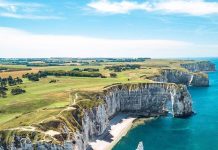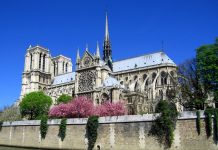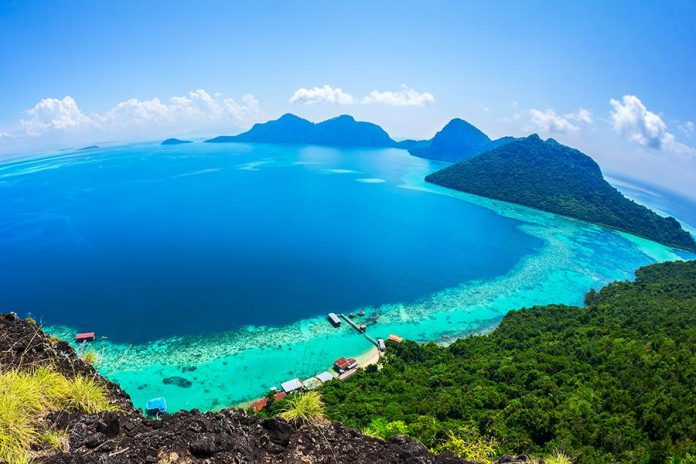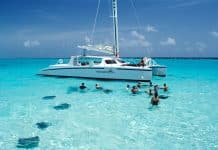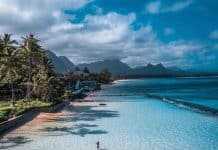Borneo is not your typical backpacker destination. It’s not as popular as its other more developed South East Asian neighbors. Borneo is an obscure jungle, literally and physically. It’s not frequently talked about, not as easy to travel through, and not as catered to western comfort standards as more touristy South East Asian countries. But it’s home to some mind-blowing scuba diving sites and one of the oldest rainforests in the world. It’s no surprise this combination makes Borneo an incredible place to visit.
Brief Borneo Breakdown
Borneo is the largest island in Asia and the third largest island in the world. Malaysia, Indonesia, and Brunei all claim part of it as their own, for a total of four separate political regions. Kalimantan belongs to Indonesian, Sabah and Sarawak to Malaysia, and lastly, the independent sultanate of Brunei.
Located off mainland Malaysia, almost directly east of capital city Kuala Lumpur, Borneo is surrounded by the South China Sea, Sulu Sea, Celebes Sea, and the Java Sea. Borneo’s location catapults it to the top of the charts in terms of scuba diving and pristine nature.
Where do I Start?
Good question. Borneo is massive, largely underdeveloped, and overwhelming to even experienced travelers. It’s definitely a good idea to do a little research on the area before you go. The activities you want to do or sites you want to see will greatly affect your starting point.
Scuba diving was the top priority when my friends and I planned our trip to Borneo. The region most famous for diving is Sabah, on the northeast coast of the island. This is where our trip began.
We flew into Tawau International Airport (TWU) from Kuala Lumpur, a 3-hour flight from the Malaysian capital. From this airport, Semporna is accessible via bus or taxi. This district and mainland city is the jumping off point to some of the most famous dive sites in the world, Mabul Island and Sipadan Island.
FIRST STOP, SEMPORNA…
First off, Semporna is not a beautiful place. The “downtown” is three or four dirty village blocks with several small bars, restaurants, dive shops, and accommodations. It’s clear the area was developed for tourism, however there is poverty at every turn.
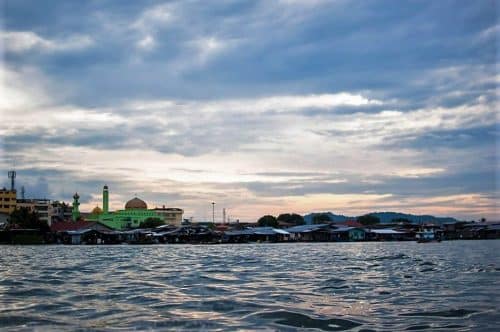
It is not the picturesque place you’d see if you google-imaged the area. It’s hard to imagine some of the most gorgeous white-sand beaches and the brightest turquoise water you’ve ever seen lie just a few minutes off the coast…
 Beautiful strip of white sand in the middle of the Celebes Sea.
Beautiful strip of white sand in the middle of the Celebes Sea.
Diving in Sipadan
Diving must be booked in advance if you want to go to Sipadan Island. The National Park only issues a certain number of permits to dive shops per day and no diver is admitted without a permit. Many of the dive shops also offer accommodation with their dive packages. The easiest thing to do is book an all-inclusive package with at least 2-3 days of diving.
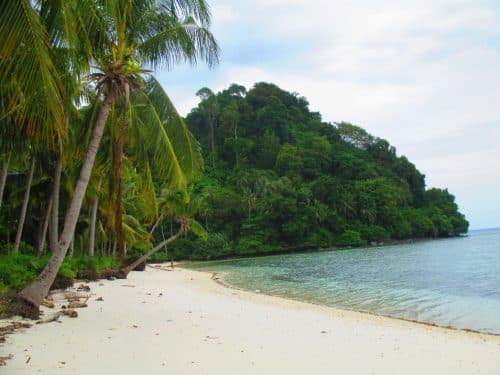
Surface Interval between dives on a nearby island.
The diving off Semporna is fantastic. After the first day, there wasn’t a doubt in our minds as to why this has been crowned a world-class destination. Here you have the chance to see hammerhead sharks, massive schools of jackfish and barracuda, and manta and devil rays. Turtles, reef sharks, moray eels, and scorpionfish are the norm. Mabul is known for its awesome macro diving. If you’re into small things like nudibranch, shrimps, and inconspicuous bottom dwellers, then you cannot miss this muck-divers haven.
SECOND STOP, SEPILOK…
The only worthwhile reason for stopping in Sepilok is to visit the Orangutan Rehabilitation Center. This 45-square kilometer plot of protected land is home to approximately 60-80 orangutans. It’s been serving the orphan orangutan population in Sabah for over 50 years, since it’s opening in 1964.
The rehabilitation center is a little outside the small city, on the edge of the Kabili Sepilok National Forest Reserve. It’s the city’s primary tourist attraction, there is a bus station in the city center that shuttles visitors back and forth.
There’s a short walk on a manmade walkway through the dense jungle canopy. Halfway in, there’s a large area cleared for viewing and taking pictures of the Orangutans.
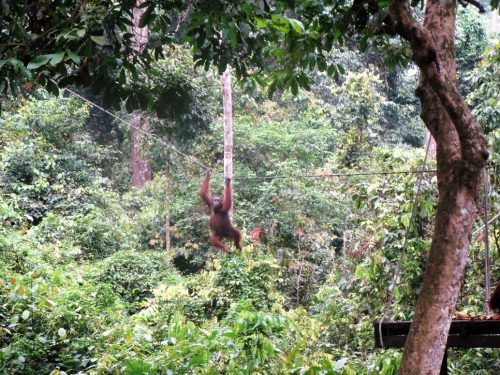
The center organizes feedings several times a day and this is the best opportunity to see the Orangutans. From behind mesh fencing, we watched as the primates descended upon their meal, teasing, playing, and fighting with each other over the food.
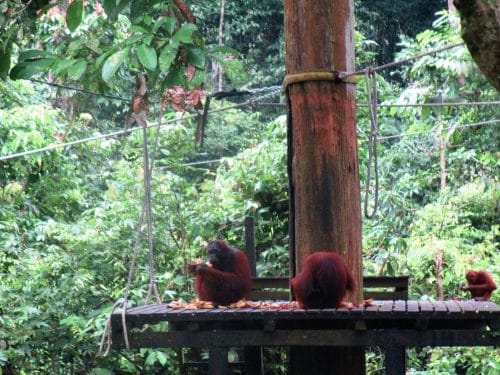
The show is essentially over after the feeding, and we moved onto small nature hikes through the dense forest.
Another noteworthy point about Sepilok is that it’s home to the biggest monitor lizards I’ve ever seen in my life! These guys were just patrolling the rocky coastline like they owned the place!
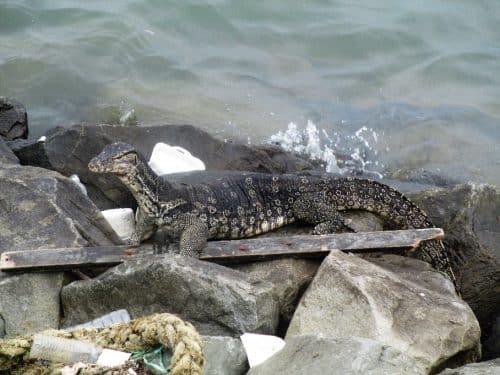
THIRD STOP, KOTA KINABALU…
After Sepilok, we geared up for another long haul to Kota Kinabalu. After a 7-hour bus ride, we arrived in late afternoon to cool, rainy weather. We posted up in our cozy little open-air hostel and waited out the storm. The city of Kota Kinabalu was more developed then I was expecting, but nowhere near the standards of Kuala Lumpur.
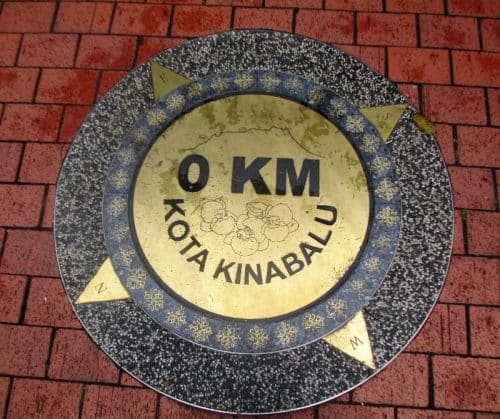
There is some super interesting street art and displays that make a wander around downtown worthwhile.
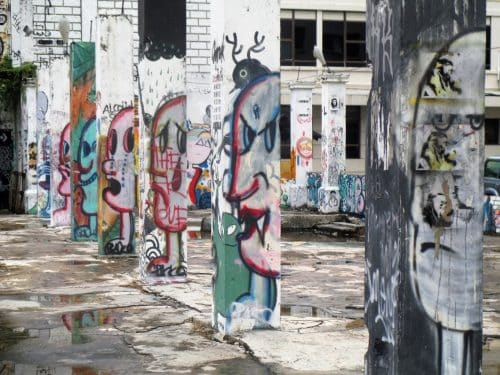
Mount Kinabalu
We stayed only one or two nights in KK (as it’s known). A two-hour drive and a 5,182-foot change in altitude later found us at the gates of Mount Kinabalu National Park. This park was Malaysia first UNESCO World Heritage Site (est. 1964) and Mount Kinabalu itself is Borneo’s highest mountain.
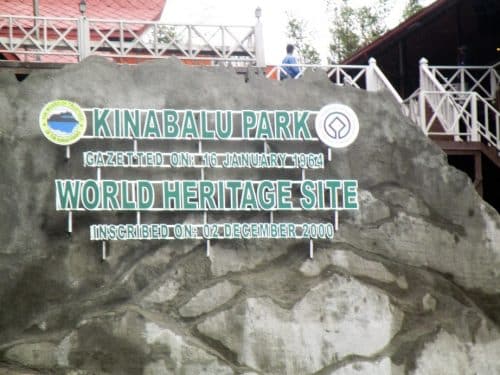
This park is famous for its lush greenery and impressive diversity; 4,500 different species of flora and fauna, 326 bird species, and over 100 mammal species.
The first thing we realized once we stepped out of the bus is the drastic change in temperature. It was about 20 degrees colder than it had been in Kota Kinabalu. We hardly had any warm clothes (remember, this started out as a scuba diving trip in the tropical Celebes Sea) and we quickly started layering our t-shirts.
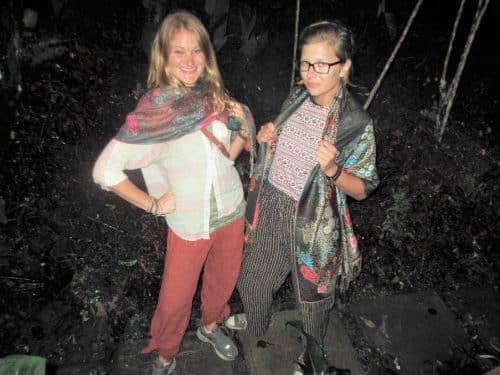
Our second mistake was not booking any accommodation ahead of time. Upon arrival, we were told the National Park’s accommodations were full. Instead, we walked a kilometer down the road and luckily found a lovely homestay. We were the only guests and the owner (a sweet local lady) cooked us heaping plates of fried rice for dinner. Going to bed that night we were freezing! We piled on all our clothes, wrapped ourselves in our sarongs and travel towels, and hunkered down for the night!
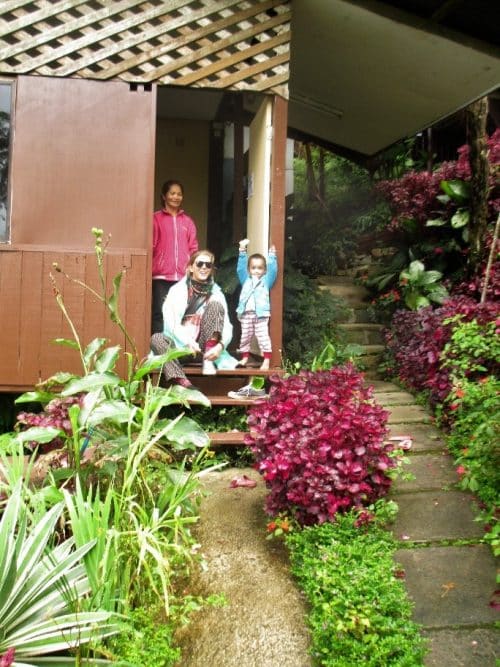
The time of year we visited (October) is notorious for low visibility and cloud cover. Due to this, we decided against conquering Mt. Kinabalu. We were also told the poor weather made our chances of summiting slim. Instead, we enjoyed a soggy tromp around the parks dozens of hiking trails. The natural beauty of this park is one of a kind and we still had a great time despite not making it to the main attraction. We still managed to glimpse some views of the towering Mount Kinabalu through the clouds.
FOURTH STOP, (A NEW COUNTRY!) BRUNEI
After a few cold nights in the National Park, we caught a bus back down to KK. From the port at Kota Kinabalu, we began our boat trip to the sultanate of Brunei Darussalam.
Before reaching Brunei, there was a mandatory stop in Labuan, the duty-free island in Malaysia. This is a destination in itself and many locals take advantage of the tax-free shopping.
After a few hours break we boarded another boat. We finally arrived in Bandar Segi Begawan, Brunei, after several more hours at sea. The total journey took at least 8 hours.
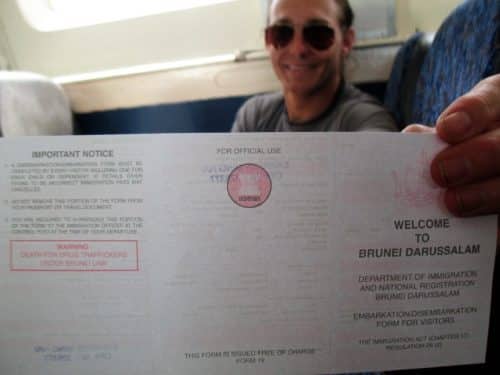
Our first impression of Brunei was how clean and orderly it was. And quiet. Another thing to keep in mind is Brunei is a dry country, meaning alcohol is not sold in restaurants or stores. It would be considered very disrespectful to be seen drinking in any public place.
One of the most impressive sites in Brunei is the Masjid Omar Ali Saifuddien – a mosque dedicated the current sultan’s late father. The mosque is a majestic sight with its pale exterior, contrasting gold dome, and surrounding man-made lagoon. Visit in the evening when the sunset’s soft light hits the building, giving the whole premise a warm, golden glow.
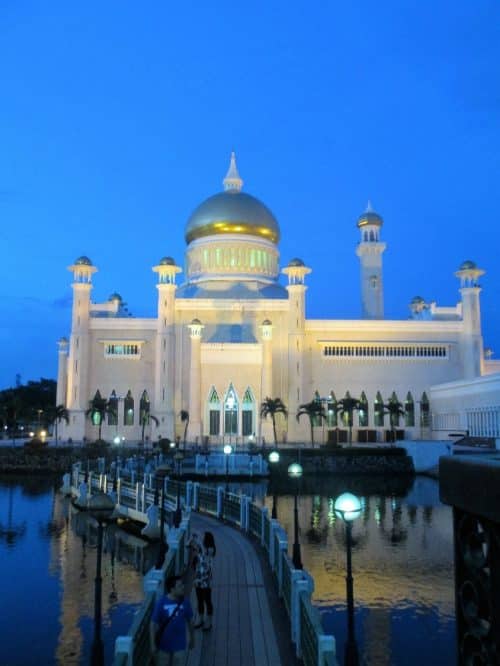
The next day we took a boat tour along the banks of the Brunei River. During this boat ride we learned the contrast between the simplest and most extravagant way of life in Bandar Segi Begawan; from the village houses and local school, to the luxurious, over-the-top Istana Nurul Imam, the Sultan’s palace which claimed the Guinness Book of World Records title for the largest residential palace.
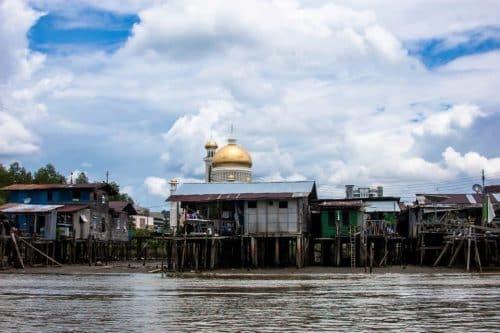
Shrouded in security and secrecy, it’s difficult to catch a glimpse of this dominating structure. However, a sloped white roof and gold dome can be seen peeking out over the tree line from the banks of the river.
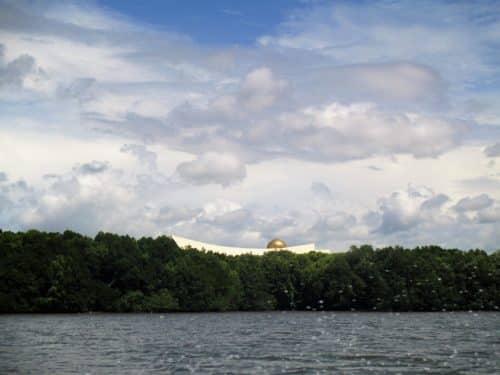
FIFTH STOP, MIRI…
The bus ride from Bandar Segi Begawan to Miri (located in Malaysia’s second political state of Sarawak) is only a couple of hours. Our original plan did not include a stop in this city, but half way through our trip we discovered the only way to enter Mulu National Park (located near the southern border of Brunei in Malaysia’s Sarawak) was via plane or on foot. There are no accessible roads into the park, so flying in or walking in were the only options.
We didn’t have time to walk the famous Headhunter Trail, starting outside the park in the village of Limbang and terminating inside the park’s northern border (although it sounded awesome!). Instead, we booked cheap flight out of Miri to Mulu’s own private airport which lasted approximately 20 minutes.
We exited the tiny airport and started walking to find a homestay. We found a lovely little place about 500 meters outside the park’s entrance and posted up there for the next 3 days.
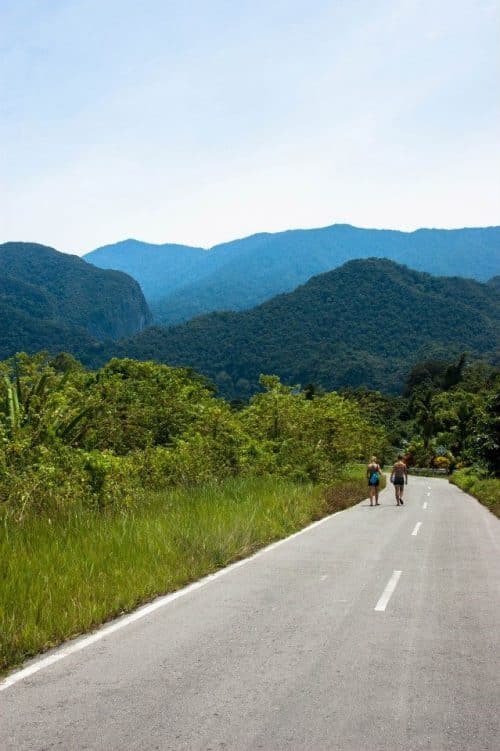
Can’t miss experiences inside Mulu National Park include: The Canopy Skywalk, Pinnacles Trek (we didn’t have time for this, but it’s highly recommended), Bat Exodus and Deer Cave, and the Clearwater Cave Tour.
We packed a lot into 3 days, but there were several highlights. The Bat Exodus outside of Deer Cave was amazing to watch. Every night visitors gather outside the cave to watch millions of bats exit the cave at dusk. From the ground, the swarm of bats looks like chimney smoke. This happens every night like clockwork.
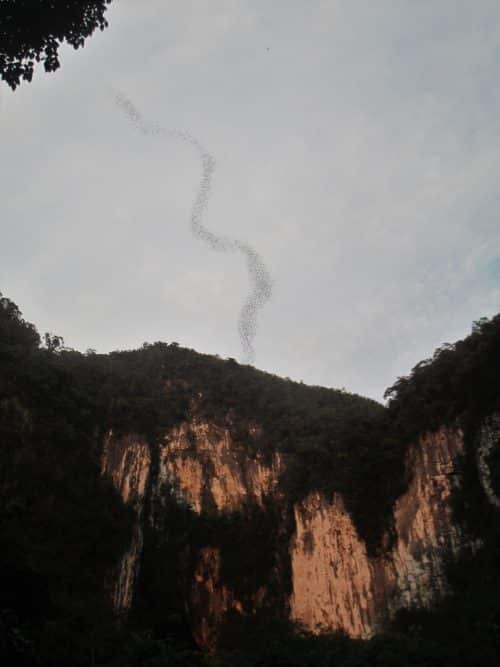
The day trip to Deer Cave, the largest cave passage in the world, is totally worth it. It’s not too strenuous, but involves some swimming to get to point a from point b. Nature trekking and river walking is also included. This is a great way to appreciate all the flora and fauna of the park.
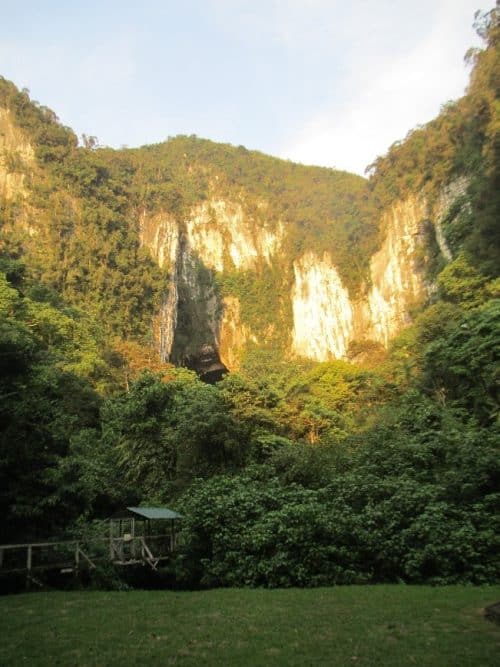
Clearwater Cave is the largest interconnected cave system in the world as well as having the 8th longest cave in the world. The caves were so massive that we felt like we were wandering through a huge, domed cathedral.
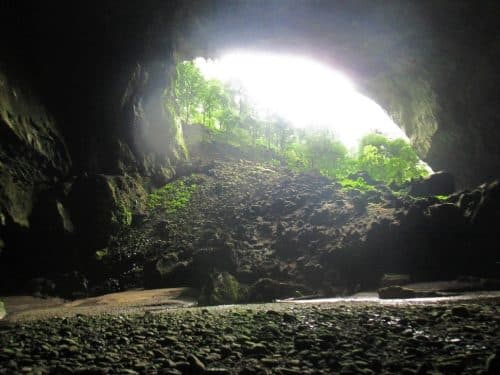
This tour also includes a longboat ride to Penan Village. Here we browsed the local market for handicrafts and learned about the native people from our knowledgeable guide. Our guide also showed us how to use a blowpipe (keleput), the handmade weapon the villagers used to hunt prey.
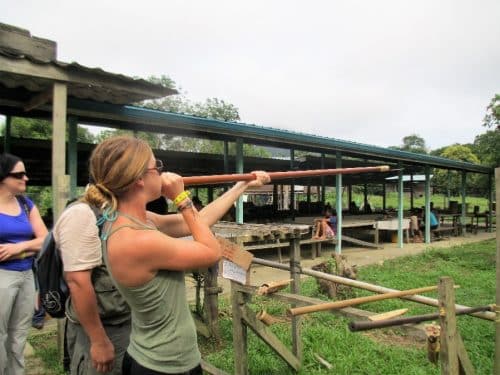
The Cave of the Winds is combined with the Clearwater Cave and Penan Village tour. This cave gets its name from the composition on its walls, which resemble windswept sand dunes. The tour of this cave is very easy with man-made wooden walkways throughout. The stalactites and stalagmites are very impressive.
We decided to save the Canopy Walk for our last day in Mulu. It boasts a very impressive suspension system and the longest tree-based skywalk in the world.
Multiple bridges crisscross the tree tops. In between each bridge is a viewing platform for taking pictures and soaking up all the natural beauty at each stop.
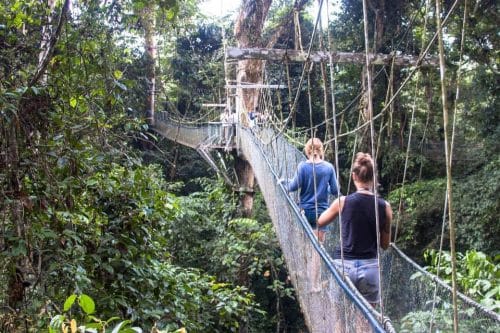
There’s a high chance of spotting some native snakes in the trees, too!
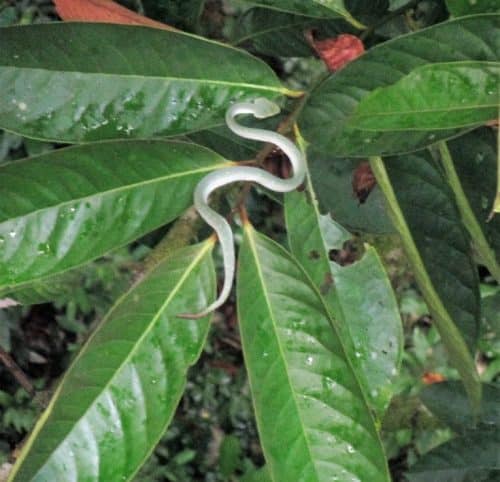
***********************************************
After three weeks of adventuring around Borneo’s dense jungles and tropical waters, we were thoroughly exhausted. In a good way. The trip was a great reminder that there are many amazing countries out there that have not been spoiled by overexposure.
Borneo was made for the person who loves a challenge, doesn’t mind getting back to basics, and can tolerate a little dirt on their hands now and again. My advice is to visit before more people discover this diamond in the rough!

